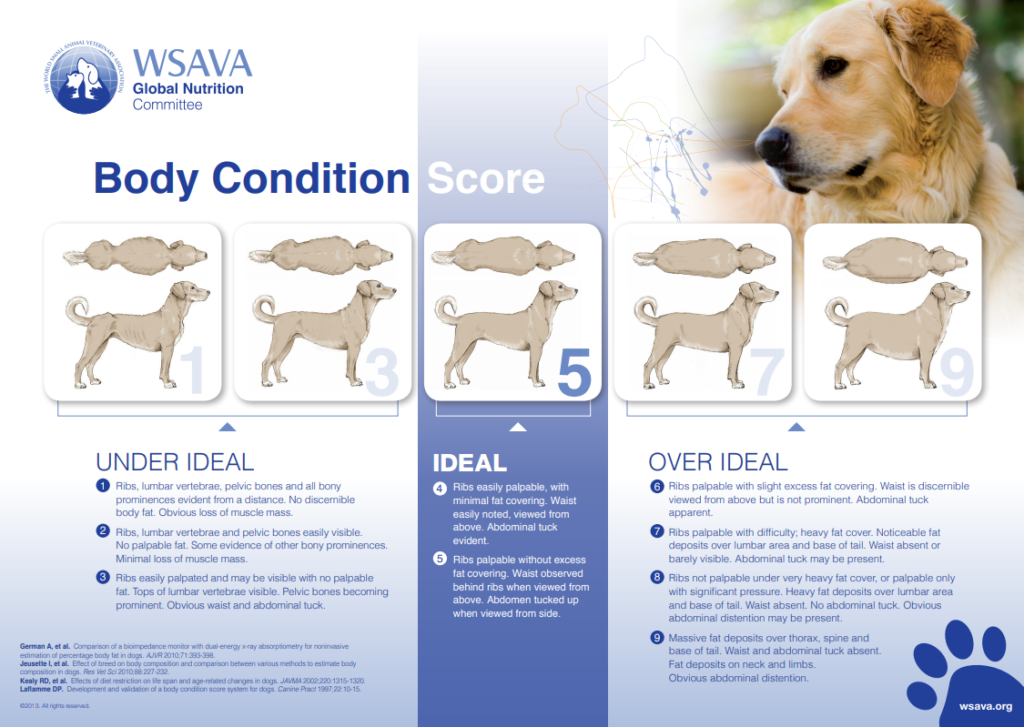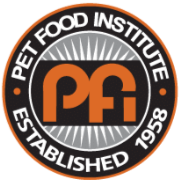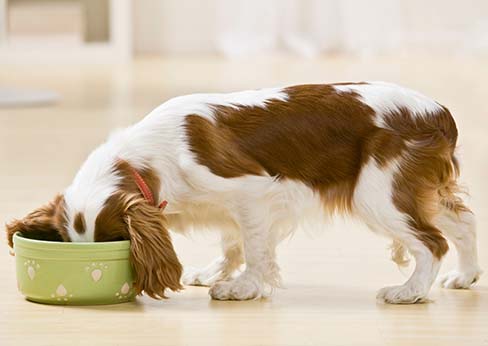In this post:
- Why does my dog inhale food and how to stop it?
- How much food should you feed your dog or cat?
- How to be responsible with dog treats so your dog does not get fat?
Does your dog seem like they are always hungry? You may not be feeding them enough, but they also may just really love to eat. Many dogs are overweight and are eating way too much food even though they are getting the right amount of food. By monitoring your pet’s weight and following some simple guidelines, your dog will stay at a healthy weight.
Why does my dog inhale his food?
There is an instinct in some dogs to eat as much as possible as quickly as possible. It is common in dogs with insecurities like I better gulp all of this before someone gets it from me. This can cause a lot of issues such as gassiness to a life-threatening condition, bloat.
How to stop a dog from inhaling his food?
It can be dangerous for your dog to eat his food too fast. Choking can happen, bloating, upchucking and overeating are other problems that can coexist with eating too fast. It is important to stop this behavior for your dog’s safety and health.
Going to the local pet store can help solve your problems. Not only can you get special bowls and toys that are meant to slow down eating, but there are special foods that are shaped to encourage slower eating. Try using an interactive toy like this Kong Wobbler. You can spread the food on a cookie sheet, throw it on the floor, or outside in the grass.
If you are unable to stop this behavior talk to your veterinarian or specialist to see what other options are for you.
How much food should you feed your dog or cat?
Many people will ask their vet how much food should I be feeding my dog? The bottom line is that on every single bag of dog or cat food there are feeding recommendations. Those recommendations are designed for the life stage as well as for the overall amount that your dog or cat should be eating depending on how much they weigh.
The amount of food that you are going to feed your dog will obviously vary a little bit depending on the specific food that you’re feeding and that’s why it’s always important to look at that package to help with your guidelines. Many times, these guidelines will also have ranges for dogs who are overweight and dogs who are underweight.
Should you always feed the same amount?
You may not always feed the same amount to your dog year-round.
- In the summer months, your dog may be more active and start to lose a little weight or need more food to keep up with their energy demands.
- In the winter, when it is colder, your dog may not want to be outside playing as much. They can easily pack on a few extra pounds this time of year. By decrease the food that you feed during this time you will help keep them at their ideal body condition.

So, if your dog is gaining weight you can decrease by about half of a cup and if your dog is losing weight then you might want to increase by half a cup. Working with your veterinarian you come up with some wonderful guidelines on how to feed your dog appropriately for long and healthy life.
How to measure out dog’s food?
Many pet food companies also have measuring cups for your dog food. These are the exact same measurement as the measuring cups that you use for cooking. When your veterinarian says to feed a cup you should really get a measuring cup and feed your dog according to those measuring cups. This does not mean a drinking cup or a large scoop that you think is about a cup. Actually, get a measuring cup and make sure you are giving your dog the correct amount.
If you are feeding a cat at home or even for some small dogs you may want to look at an individual measuring scoop for the amount of food that you feed and this is a quarter cup measuring cup and it also has a little hash mark in it for an eighth of a cup and that’s going to be very useful for your smaller pets.
How to be responsible with dog treats so your dog does not get fat?
It is best for you to plan for about 90% of the daily calories to be coming from your complete and balanced food, whatever that may be, and you want 10% of the calories that you feed every day to be leftover as treats. You should never have to take the treats away, but you do have to make sure you are feeding them in moderation.
How to not over-treat your dog?
As you are training your dog using positive reinforcement or doing the trick training you will find that you are using a lot of treats. We want to believe that all of our dog owners want to be careful as to not add extra pounds to their dogs. It is a big concern in the dog world that more and more dogs are becoming overweight.
Here are some things that you should be doing:
- Measure out your dog’s food for the day. Example: Your dog eats 4 cups a day (Truffle the Maniac amount).
- Split the amount in half. 2 cups and 2 cups.
- Use 2 cups for feeding your dog. Example: 1 cup in the morning or 1 cup in the evening. OR 1/2 cup in the morning and ½ cup in the afternoon. Whatever your vet suggested.
- Use the other 2 cups as treats.
- Whatever is left over, add to your dog’s dinner.
This way your dog is not consuming extra calories and is still getting rewarded.
- Use veggies as treats (talk to your vet about toxic veggies)
- Use low-calorie treats
- Use treats that do not have extra fillers like ZiwiPeak
- Use toys as a reward
- Use attention as a reward
The Pet Food Institute also suggests:
- Feed treats in moderation.
- Use pet treats alongside a complete and balanced pet diet.
- Avoid feeding table scraps.
- Make sure your pets get plenty of exercise and freshwater.
Final Thoughts
Feeding your dog should not be a very hard process. Making sure that you are actually measuring their food and not giving them too many treats so your dog can stay at a fit weight. An overweight dog carries many health problems that you can easily avoid by feeding the correct amount of food.
Special Thanks

The Pet Food Institute and its members are committed to helping dogs and cats live long and healthy lives. They advocate for legislation, regulations, and technologies that support the domestic manufacture and global distribution of safe, quality pet food and that provide for consumer choice





